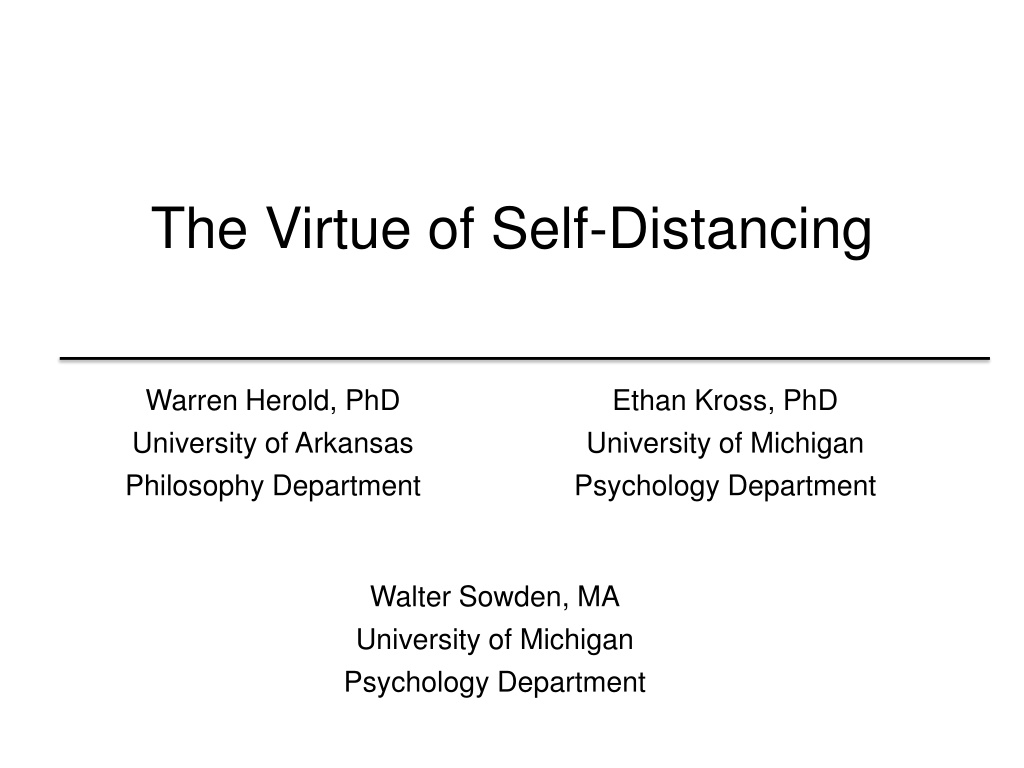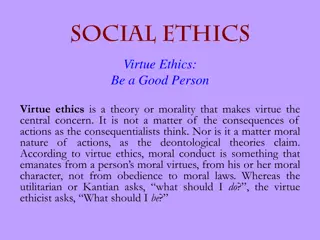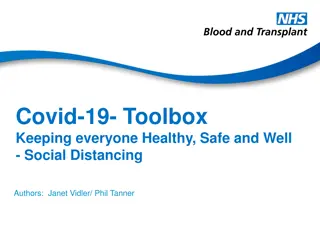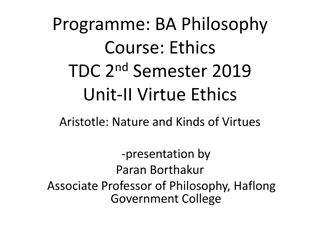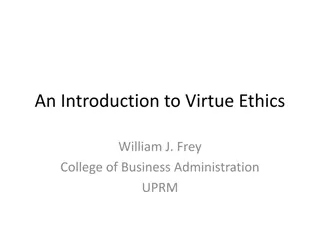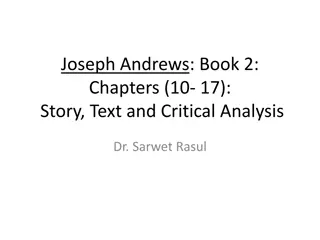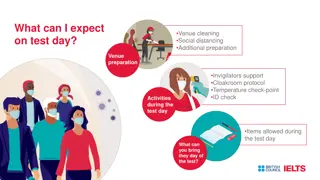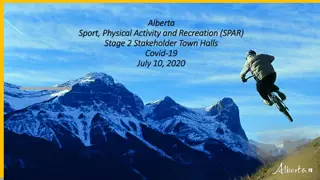The Virtue of Self-Distancing
A deep dive into Adam Smith's perspective on self-distancing, exploring its effects on emotional reactivity, self-control, and empathy towards others. The narrative unfolds through insights from experts at the University of Arkansas and the University of Michigan, shedding light on the development of a moral self through self-evaluation and the importance of balancing self-interests with those of others.
Download Presentation

Please find below an Image/Link to download the presentation.
The content on the website is provided AS IS for your information and personal use only. It may not be sold, licensed, or shared on other websites without obtaining consent from the author.If you encounter any issues during the download, it is possible that the publisher has removed the file from their server.
You are allowed to download the files provided on this website for personal or commercial use, subject to the condition that they are used lawfully. All files are the property of their respective owners.
The content on the website is provided AS IS for your information and personal use only. It may not be sold, licensed, or shared on other websites without obtaining consent from the author.
E N D
Presentation Transcript
The Virtue of Self-Distancing Warren Herold, PhD University of Arkansas Philosophy Department Ethan Kross, PhD University of Michigan Psychology Department Walter Sowden, MA University of Michigan Psychology Department
Adam Smith on the Self Were it possible that a human creature could grow up to manhood in some solitary place, without any communication with his own species, he could no more think of his own character, of the propriety or demerit of his own sentiments and conduct, of the beauty or deformity of his own mind, than of the beauty or deformity of his own face. Adam Smith, The Theory of Moral Sentiments ( TMS ) III.1.3 They would think & feel, but not about their thoughts & feelings. Personality, but no self
Adam Smith on the Self Bring such a person into society We suppose ourselves the spectators of our own behaviour, and endeavour to imagine what effect it would, in this light, produce upon us. TMS III.1.5 Claim: We develop a moral self by engaging in a process of self- distanced self-evaluation.
Adam Smith on Self-Distancing Two effects of self-distancing: 1. Moderates emotional reactivity & enables self-control By placing ourselves in our spectator s shoes, we come to conceive some degree of coolness about [our] own fortune (TMS I.i.4.8) The process abates the violence of our feelings (TMS I.i.4.8).
Adam Smith on Self-Distancing Two effects of self-distancing: 2. Leads us to place more weight on the rights & interests of others, enabling a proper comparison between our own interests and those of other people (TMS III.3.1). we are but one of the multitude, in no respect better than any other (TMS III.3.4). the propriety of resigning the greatest interests of our own, for the yet greater interests of others (TMS III.3.4). that we value ourselves too much and other people too little (TMS III.3.6).
Adam Smith on Virtue The man of the most perfect virtue [ ] is he who joins, to the most perfect command of his own original and selfish feelings, the most exquisite sensibility both to the original and sympathetic feelings of others (TMS III.3.35).
Questions 1. Does self-distancing moderate emotional reactivity & enable self-control? 2. Does self-distancing lead us to place more weight on the rights & interests of others?
What We Know (for reviews, see Ayduk & Kross, 2010; Kross, 2009; Kross & Ayduk, 2011; Kross & Ayduk, in prep) Self-distancing enhances: Performance under stress (e.g., Kross et al., 2014, JPSP; Dolcos & Albarracin, 2014) Short-and long-term emotion regulation under stress (e.g., Ayduk & Kross, 2008, 2010; Kross et al., 2005, 2014; Kross & Ayduk, 2008, 2009, 2010; Kross et al., 2013, 2014, Ray et al., 2008) Goal perseverance & motivation (e.g., Dolcos & Albarracin, 2014; White et al., 2015) Executive functioning (e.g., White & Carlson, in press) Neural & physiological indices of effective emotion regulation (Ayduk & Kross, 2008, 2010; Kross et al., 2009; Moser Kross et al., under review)
What We Dont Know Does self-distancing lead people to place more weight on the rights & interests of others?
Our Goal To rigorously test whether self-distancing leads people place more weight on the rights & interests of others using a multi-methodapproach that utilizes laboratory and field methods. Aim 1: Perform laboratory studies to isolate causal mechanisms and test predictions under controlled conditions Aim 2: Perform a large field study that uses experience sampling to examine how self-distancing impacts virtue in daily life over time
Aim 1: Laboratory Studies Dictator Game Present participants with choice dilemma that requires them to weigh their own interests against the interests of others Public Goods Game Helping Task Self-Immerse Self-Distance Control Assess Potential Mediating Mechanisms Across Multiple Levels of Analysis (e.g., emotion & physiological reactivity; self/other-concept accessibility) Assess Dependent Variable(s)
Aim 2: Field Study Self-Distancing Training Self-Immersion Training No Treatment Control Experience Sampling Text Message Participants 5 times a day for 14 days Gold standard approach for measuring in-vivo behavior and psychological experience over time (e.g., Killingsworth & Gilbert, 2010; Kross et al., 2013) Each time we text them, we will ask them to: 1. Rate their (a) feelings, (b) physiological arousal, (c) self-focus, (d) other focus 2. Indicate whether they ve experienced conflict with another person since we last texted (if so, describe how you managed it) 3. Indicate whether they ve cooperated with another person since we last texted (if so, describe) Eliminates many of the biases inherent in survey methodologies (e.g., Kahneman, Krueger, Schkade, Schwarz, & Stone, Science, 2004) Useful for drawing inferences about their likely causal sequence
5 Challenges Can we integrate deeply? We possess necessary expertise in philosophy (WH), psychology (EK;WS), methods (EK;WS) Track record of working & thinking well together Can we run the proposed studies? We have access to a fully equipped behavioral and psychophysiological laboratory Full time lab tech support; experience sampling protocols are in place (e.g., Kross et al., 2013) Can we recruit & retain participants? Well-established mechanisms are in place for recruiting participants from the community Participants will be incentivized to reduce attrition in Study 2 Can we perform requisite advanced statistical analyses? We have expertise performing lagged analyses and causal modeling (EK;WS) We have the support of a statistical consultant (Verduyn) who we have successfully worked with Can we enhance replicability and robustness? All studies will utilize relatively large sample sizes Will perform multiple conceptual replications of lab experiments
Four Key Contributions 1. Provide a true deep integration of Smith s claims re: self-distancing with psychological theory and research 2. Identify whether and how self-distancing promotes virtue at a mechanistic level, across multiple levels of analysis 3. Demonstrate the real world validity of our research 4. Provide people with a blueprint for how to enhance virtue in daily life (should they desire to do so)
Harnessing Language to Promote Self-Distancing People typically use first person pronouns to refer to the self They use non first person pronouns & names to refer to others - Using these parts of speech to refer to the self should lead people to think about the self as another person with a caveat - Another person whose inner thoughts and feelings they have privileged access to.
